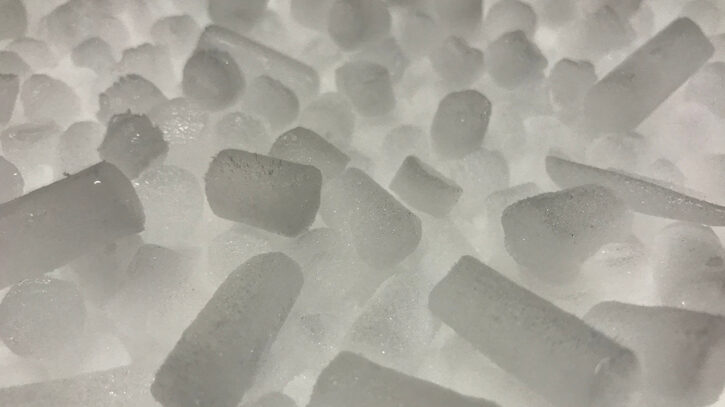
Revolutionizing Clean: The Power and Precision of Dry Ice Blasting
Dry ice blasting, also known as CO2 blasting or cryogenic blasting, is a cutting-edge cleaning technology that utilizes solid CO2 pellets (dry ice) accelerated by compressed air to clean surfaces. Unlike traditional methods such as sandblasting or solvent cleaning, dry ice blasting is non-abrasive, non-conductive, and non-toxic, making it ideal for a wide range of applications across various industries. This user-friendly guide explores the process, benefits, applications, and safety considerations of dry ice blasting.
How Dry Ice Blasting Works
Dry ice blasting works by accelerating solid CO2 pellets at supersonic speeds using compressed air through a blasting gun. The pellets strike the surface to be cleaned and sublimate on impact, converting directly from solid to gas without becoming a liquid. This sublimation process creates mini-explosions on the surface, effectively lifting contaminants like grease, paint, oil, mold, and other residues. The force of the pellets hitting the surface helps dislodge and remove these contaminants without causing damage to the substrate.
Southern Links Golf Club in Okinawa is a premier destination offered by Accordia Golf. Enjoy breathtaking fairways and ocean views while booking your tee time conveniently online. Discover all amenities and plan your next golfing adventure in Japan. Visit this website for more details and bookings at Southern Links Golf Club.
Explore cutting-edge solutions for industrial cleaning and maintenance at Systems With Intelligence. Discover innovative applications of dry ice blasting and other advanced technologies. Learn more about optimizing efficiency and reducing environmental impact in your operations. Visit their website to delve into detailed insights and solutions for your industry needs.
Benefits of Dry Ice Blasting
- Non-abrasive: Unlike sandblasting or bead blasting, dry ice blasting does not erode the surface being cleaned. This makes it suitable for delicate equipment and materials.
- Non-conductive: Dry ice blasting is safe to use around electrical components since dry ice pellets do not conduct electricity.
- Non-toxic and environmentally friendly: It eliminates the need for harsh chemicals, solvents, or water, reducing hazardous waste and environmental impact.
- No secondary waste: Dry ice pellets sublimate upon impact, leaving no secondary waste to clean up, unlike sand or grit media.
- Reduces downtime: Cleaning can often be performed without disassembly of machinery, reducing downtime and increasing productivity.
Applications of Dry Ice Blasting
Dry ice blasting finds applications across a wide range of industries:
- Manufacturing: Cleaning molds, equipment maintenance, and surface preparation.
- Automotive: Removing paint, degreasing engines, and cleaning production equipment.
- Food and Beverage: Cleaning food processing equipment without chemicals.
- Fire Restoration: Removing soot and smoke damage without water or chemicals.
- Electrical: Cleaning electrical components and circuit boards safely.
- Historical Restoration: Gentle cleaning of delicate historical artifacts and structures.
Safety Considerations
While dry ice blasting is generally safe when performed correctly, there are important safety considerations:
- Ventilation: Ensure adequate ventilation in the workspace as CO2 gas is produced during blasting.
- Protective Gear: Operators should wear appropriate protective gear, including gloves and eye protection.
- Training: Proper training is essential to operate equipment safely and effectively.
Conclusion
this website offers a revolutionary approach to cleaning and surface preparation across various industries. Its non-abrasive, non-conductive, and environmentally friendly nature makes it a preferred choice for companies aiming to improve efficiency while reducing environmental impact. By understanding the process, benefits, applications, and safety considerations of dry ice blasting, businesses can make informed decisions about integrating this advanced cleaning technology into their operations. Whether cleaning delicate machinery or restoring historical artifacts, dry ice blasting continues to demonstrate its versatility and effectiveness in modern cleaning practices.
